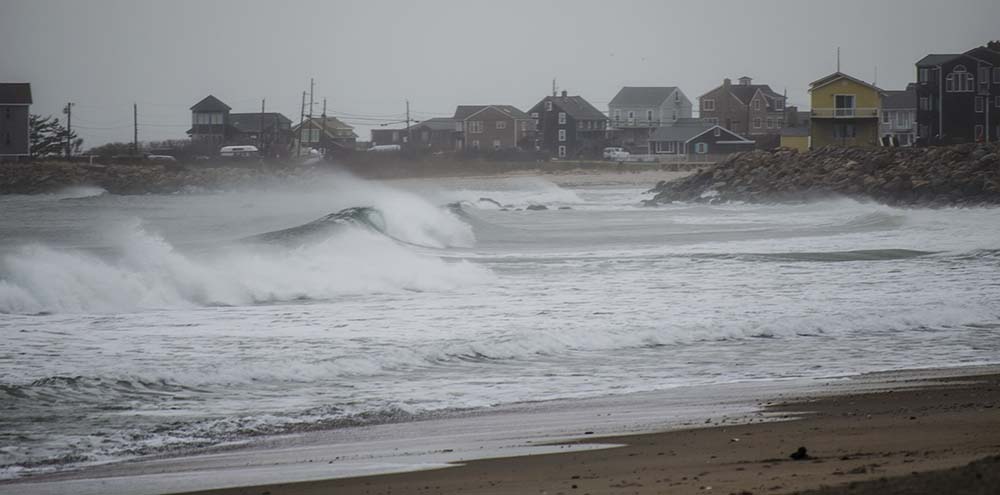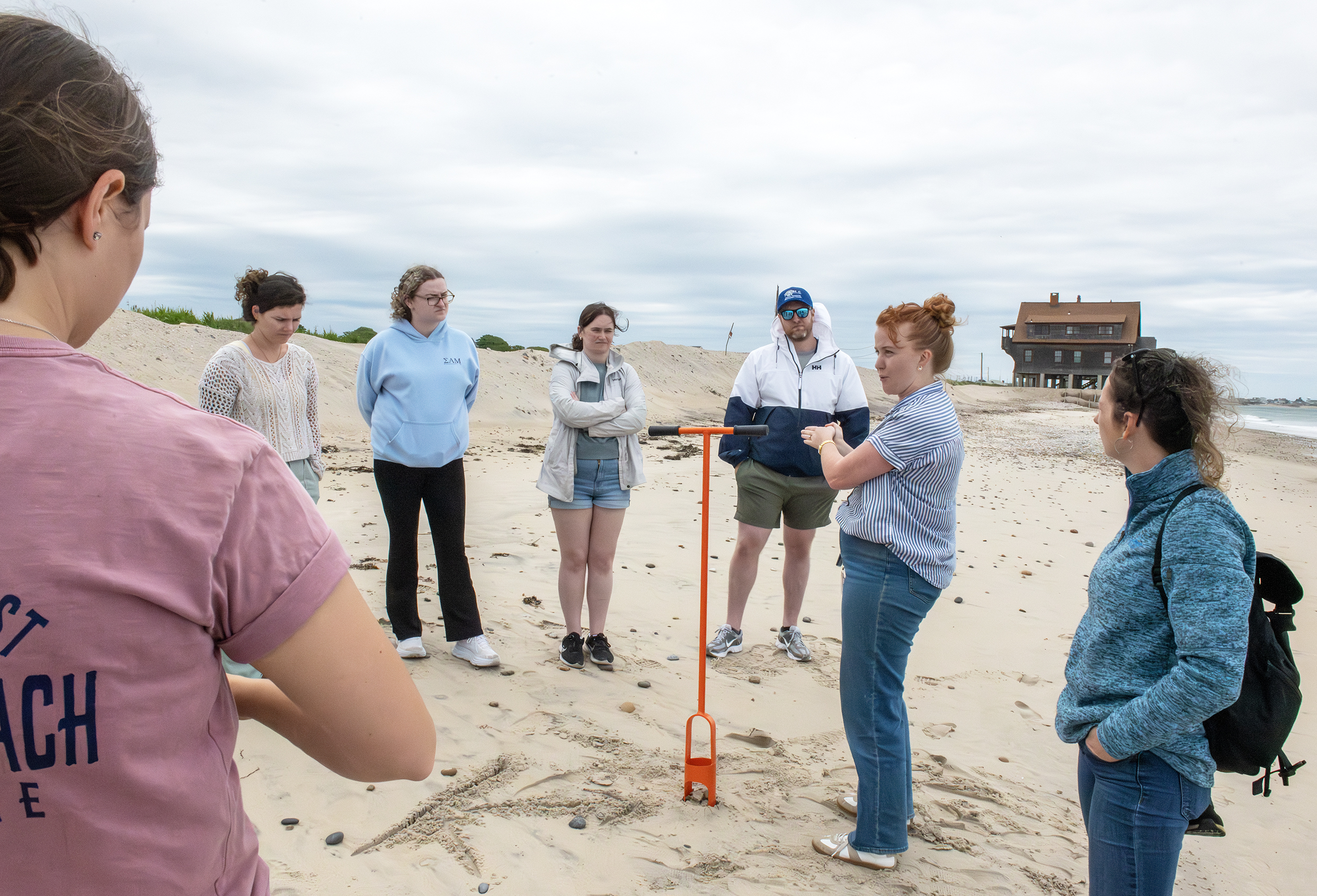As a grain of sand is washed from the public beach to private property, and from there to the public road or salt pond behind it, does the ownership of that sand change?

The question of how ownership in tidal areas changes–or doesn’t–as geological conditions change is one posed to Julia Wyman, director of the Rhode Island Sea Grant Legal Program and the Roger Williams University School of Law Marine Affairs Institute. She, in turn, posed it to the students in from the Roger Williams University School of Law Marine Affairs Institute’s Coastal Resilience Law and Policy Clinic. Led by Wyman, the clinic is a 10-week intensive summer course that tasks students with bringing their legal expertise to a resilience problem facing a coastal community.
Kevin Sloan, a coastal policy analyst with the Coastal Resources Management Council (CRMC) and a RWU Law School and Rhode Island Sea Grant Law Fellow alum, approached Wyman about the question of changing ownership and discussed with the clinic the reasons for his concerns at a site visit to the South Kingstown shoreline in June.
Emily Hall, CRMC coastal geologist, explained some of the principles of how land can change ownership through different geological processes. With slow accretion or erosion on a coastline, she said, ownership will change hands.
In a sudden, or avulsive, event, Hall said, ownership does NOT change hands. She said that avulsion actually refers to rivers. If a river changes its course suddenly, an owner with land on one side of the river would still own the land even if it was now on the other side of the river.
The question that staff of the CRMC are thinking about is whether a coastal process could also be considered a sudden, avulsive event.
What is gradual, or what is predictable, or what is unpredictable?
Are the lines going to move with the features, or are they going to stay put and the owners change?
“There’s not a lot of case law in this in Rhode Island, from the research we’ve done,” Hall said, “but there is one case that went to the Supreme Court from Florida on beach nourishment. In that case, the state of Florida paid for sand to be placed on the seaward edge of seaside houses and hotels, and other similar structures. And the question was, who owns that sand? Is it added onto the property of a private homeowner … or, because it was in the water, does the state of Florida now own that land?”

Sloan gave another example, in which dam removal in Rhode Island could make waters that were previously only freshwater into tidally influenced areas.
Would that change “then open up swaths of property that are now subject to CRMC regulation” since CRMC has jurisdiction over the tidal areas of the state, Sloan asked.
The law students spent the summer researching how Rhode Island could interpret avulsion in the future.
